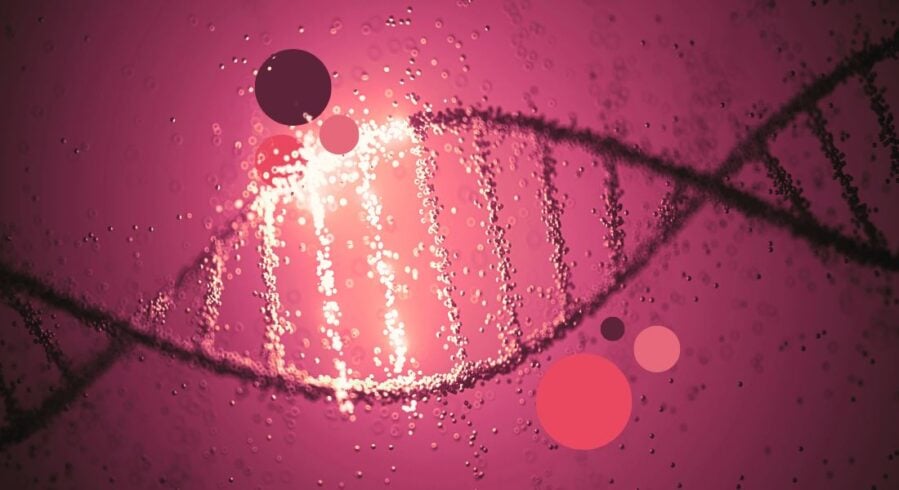A remarkable genetic mutation that shields millions of Europeans from HIV infection has been traced back nearly 7,000 years to a single individual who lived near the Black Sea, according to groundbreaking research from the University of Copenhagen. The discovery connects ancient human history with modern medicine in ways that could transform our understanding of immunity and disease resistance.
The Widespread Mutation That Blocks HIV
The genetic variation, known as CCR5delta32, is carried by 10-16% of Northern Europeans today. In Denmark, the frequency rises even higher – between 18-25% of the population carries this protective mutation.
When present in two copies (one from each parent), this 32-base pair deletion in the CCR5 gene makes people virtually immune to HIV infection. The mutation has been central to the development of modern HIV treatments, including gene therapies and medications that target the CCR5 receptor.
But why would a mutation that protects against a modern virus be so common? This question has puzzled scientists for decades.
How Did Researchers Track Down Its Origins?
Using an innovative AI-based method developed specifically for this project, researchers analyzed DNA from over 900 ancient skeletons spanning from the early Stone Age to the Viking Age. They combined this with genetic data from 2,000 people living today.
“It turns out that the variant arose in one individual who lived in an area near the Black Sea between 6,700 and 9,000 years ago,” explains Professor Simon Rasmussen from the University of Copenhagen, corresponding author of the study published in Cell.
The researchers found strong evidence that this mutation didn’t just appear randomly – it was actively favored by natural selection during the Late Neolithic and Bronze Age periods, helping it spread rapidly throughout Europe.
From Ancient Advantage to Modern Protection
What made this mutation beneficial thousands of years before HIV emerged? The answer lies in the changing lifestyles of our ancestors.
“People with this mutation were better at surviving, likely because it dampened the immune system during a time when humans were exposed to new pathogens,” explains Leonardo Cobuccio, co-first author and postdoc at the University of Copenhagen.
First author Kirstine Ravn and Cobuccio elaborate: “What’s fascinating is that the variation disrupts an immune gene. It sounds negative, but it was likely beneficial. An overly aggressive immune system can be deadly – think of allergic reactions or severe cases of viral infections like COVID-19, where the immune system often causes the damage that kills patients.”
As early humans transitioned from hunter-gatherer lifestyles to living closely together in agricultural communities, they faced new infectious diseases. Under these conditions, a more balanced immune response – like that provided by the CCR5delta32 mutation – became advantageous.
Beyond HIV: The Mutation’s Wider Impact
The study reveals that the CCR5delta32 mutation affects far more than just HIV resistance. The deletion is part of a larger genetic pattern involving 84 variants that may influence multiple aspects of health and disease susceptibility.
Researchers found associations with various medical conditions, including:
- Autoimmune and inflammatory diseases
- Cardiovascular conditions
- Neurodegenerative disorders
- Certain types of cancer
- COVID-19 infection outcomes
This complex relationship between the mutation and different health conditions highlights the nuanced effects of genetic variations in our immune system.
“HIV is a relatively new disease – less than 100 years old – so it’s almost coincidental and very fascinating that a genetic variation that arose thousands of years ago also protects against a modern virus like HIV,” notes Professor Rasmussen.
Implications for Modern Medicine
The discovery has significant implications for personalized medicine and drug development. Understanding the broader haplotype associated with CCR5delta32 could help researchers develop better targeted therapies for multiple conditions.
The study also raises important considerations for gene editing approaches that aim to mimic the CCR5delta32 deletion to confer HIV immunity. The researchers emphasize that the mutation’s effects must be considered in their full genetic context, as they’re part of a complex haplotype that affects multiple systems in the body.
As we continue to unlock the secrets of our genetic past, this research demonstrates how ancient adaptations to long-forgotten challenges can unexpectedly provide protection against modern threats – a striking example of how our evolutionary history shapes our health today.
If our reporting has informed or inspired you, please consider making a donation. Every contribution, no matter the size, empowers us to continue delivering accurate, engaging, and trustworthy science and medical news. Independent journalism requires time, effort, and resources—your support ensures we can keep uncovering the stories that matter most to you.
Join us in making knowledge accessible and impactful. Thank you for standing with us!

